Here’s correx on a couple mistakes in the last post on the Renegade Falcon and FK 12 Comet LSA biplane: *** The gentleman who bought the Falcon at Sebring is from Switzerland, not Sweden. *** The Comet with the Lycoming 233 LSA engine, which is rated for aerobatics unlike the Rotax-powered version, will be marketed by both Renegade and Hansen Air Group. *** Mike Hansen told me not everyone who is interested in the Comet wants to do aerobatics in it. Some folks just love bipes, so the Hansens will also continue to sell the Rotax-powered version.
Falcons On The Hunt
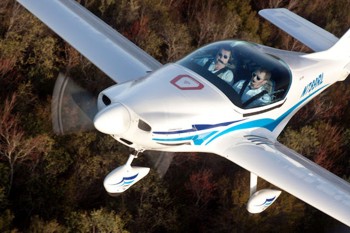
Roomy, sexy, great lines...it's been awhile coming, but the Falcon is now in production.

Manfred Wasser, happy new owner.

Packing up for Switzerland!

Looks like it'll do 150 knots easy, doesn't it?

Just heard from “Doc” Bailey of the Renegade Light-Sport gang, who have taken over U.S. production of the sleek, muscular Falcon SLSA along with wrangling the new Lycoming 233 LSA series of engines.In mid-May, Doc says they’ll be introducing their latest US version of the Falcon, including the tailwheel to tricycle version which uses the same airframe. *** The entire plane is now made here in the US, and based on the constant attention and sales at Sebring, Renegade would seem to have a success on their hands. I’ll be flying it in the next few weeks: have been looking forward to that for some time.Meanwhile, Doc tells me, “We have just moved into our new 44,000 square foot facility here at Lee’s Summit (MO). Sometime I would like to give you a tour of our facility and then when and if you want to go to North Carolina I will take you to our new composite plant, (where) we hope to be making as many as six LSA airframes there soon for different ‘want to be Made in the USA’ vendors.” *** He says the new version of the Falcon will knock my socks off.
End-‘O-Year Registration Numbers

Cessna Skycatcher

Randy Lervold and the Carbon Cub SS

2011 FAA registrations *** Click to enlarge

Overall market share *** Click to enlarge

Arion LS-1 Lightning - photo courtesy Arion

Aerotrek A240 - photo courtesy Aerotrek Aircraft

The much-anticipated LSA Market Share numbers as compiled by LAMA Europe’s head dude Jan Fridrich are up on Dan Johnson’s blog this week. They expand on some anticipated, surprising and overall encouraging themes. Sales were up at Sebring and many companies are posting strong numbers. *** First, in the No Brainer Dept: Cessna and CubCrafters won the year hands down. *** Big Cessna, as the charts Dan and Jan compile clearly show, had the largest number of registrations in 2011 with 134, a record for the LSA industry and fully 48% of all listings for the year. The numbers reflect Cessna playing catchup on its 1,000 order glut back at the beginning of the LSA movement. *** As Dan is always quick to clarify and I like to remind you, these are not sales numbers, but actual registrations and thus will lag sales numbers somewhat or, in Cessna’s case with their long initial production delays, quite a bit.
Icon Back on the Radar Screen
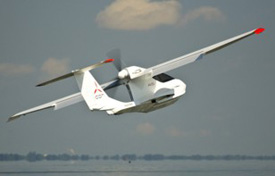
The splash heard ’round the LSA world continues to send out ripples, though it’s been years now since startup LSA maker Icon Aircraft first announced, with considerable marketing fanfare, its amphibious light sport amphibious project, the A5. *** Now comes word today from the company that’s it’s just completed a “demanding regimen of spin-resistance test flights. This milestone will make the A5 the first production aircraft in history to be designed to and completely comply with the Federal Aviation Administration’s full-envelope Part 23 spin-resistance standards developed from NASA’s work on the topic.” *** The lengthy release (a PDF file) goes on to enumerate the general cost in lives and hardware to civilian flying from stall/spin accidents, and cites its intentions to “design the A5 to the more difficult to achieve but safer standard of ‘spin resistant,'” as opposed to spin recoverable. *** Icon also conformed its testing regimen to the FAA Part 23 standard for certified aircraft.
Post-Sebring Ketchup
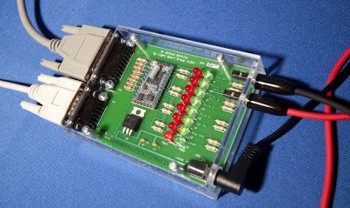

After an arduous shooting/flying schedule at Sebring and several more days in country shooting and flying around Florida, I wung my way home to bang out some stories and pix for the mag. *** And now for the rest of the Sebring story: *** I made my way through the big exhibitor tent at show central and ran into Adam Valencic of Light Sport Group, who cued me in on their latest product. They’re the folks who market the cool wide-angle A/V-ator HD camcorder that mounts in the cockpit and also stores data for later GPS tracking on computer. *** The new unit is called Dr. Rotech. The palm-sized device is an engine electronics diagnostic tool for Rotax four-stroke engines which tests everything electrical: • Generator coil (on stator) • Charging coil (on stator) • Trigger coil (A&B) • Primary ignition coil (A&B) • Secondary ignition coil • Spark plug connector • Ignition switch • Engine ground *** Verifying or tracking down problems in electrical systems such as cracked wires, loose connections and failed components can take a lot of time.
Sebring EXPO: 2.5 Perfect Days
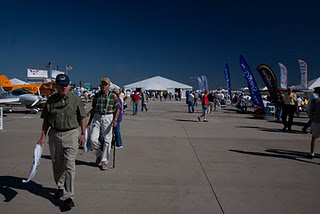


European LAMA board member Jan Fridrich catches our low photo pass at Sebring. Thanks Jan! Nobody ever shoots the photographer!

FK12 Comet folds its wings.

Randy Lervold showing how it's done.

Day for night

Roger Crow's CTLE

Sebring Expo showgrounds above the CarbonCub SS

And th-th-that’s all folks.

Sebring is alive and well and gliding along better than ever. That’s more than I can say for the wireless where I’ve tried to post since Thursday night, so today, you get two point five posts for the price of one. *** First bit of news: Opening day Thursday was the best attended in the show’s eight year history (not five years as I doofishly reported the other day). Aiding and abetting: beautiful, absolutely beautiful weather. No hurricanes, no clouds of leaflets from Republican Presidential hopefuls, just a lavishly enjoyable (for us snowbirds at least) 70 degrees, with a steady 10 knot wind a good part of the day, followed by a crisp, clear night. Thank the Maker. *** Your humble blogster took full advantage of opening day by spending almost half of it shooting and flying the new BRM Bristell S-LSA (yes, it’s ASTMified). A very, very sweet ship.
CubCrafters Will Deliver 200th LSA in February
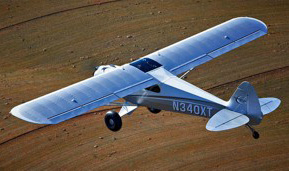
Photo courtesy CubCrafters

Savvy companies find a way through even the worst of economic times. *** Case in point: CubCrafters will deliver its 200th LSA (see Update below). *** The Yakima, Washington-based LSA maker can thus secure bragging rights for being the top US-made producer of ASTM-certified Light Sport Aircraft eclipsing its Cub clone rival American Legend out of Texas, which has led the pack for some time. Coming just a couple days before Sebring’s US Sport Aviation Expo kickoff on Thursday, the forecast should be welcome to industry watchers and potential buyers eager for a cheerier outlook. *** The company offers two Cubalikes: the Sport Cub S2 (100hp) and the Carbon Cub SS (180hp, and what a climbout monster it is!) *** The company started up in 1980 and recently added 15,000 square feet of space to its manufacturing facility. *** And yes, they are a-hirin’. *** Keep up the good work, you guys!
SEBRING EXPO Kicks Off Next Week!


The new Bristell will be at Expo next week. Photo courtesy BristellUSA

Dynon's SkyView

EAA's Rod Hightower to speak

The show I look forward to the most every winter is the Sebring U.S. Sport Aviation Expo, the premier gathering of Light Sport industry vendors in America. *** This is the fifth go round for the expo; each year it offers more pure fun for LSA pilots present and future. *** This year sports a noticeably upscale look, with new management (show founder Robert Woods remains very active in the show) and a stronger promotional flavor. *** Major sponsors this year include our own Plane&Pilot! *** The four-day gathering, which kicks off next Thursday, Jan. 19, promises to be the biggest show yet. *** Lots of return and new LSA exhibitors, display booths with the latest hot gear, and symposiums, including the new Bristell low wing monoplane and Pipistrel Sinus 50-foot span motorglider, both of which I hope to fly for future reports.Avionics leader Dynon will hold full on classes to teach the many ins and outs of its powerhouse SkyView EFIS display… for free! EAA‘s new head honcho Rod Hightower will speak at the annual LAMA dinner Thursday night.There’s a ton more things to talk about, check it out right here for all the details.
Sebring Expo 2012 Kicks Off Next Week!


The new Bristell will be at Expo next week. Photo courtesy BristellUSA

Dynon's SkyView

EAA's Rod Hightower to speak

The show I look forward to the most every winter is the Sebring U.S. Sport Aviation Expo, the premier gathering of Light Sport industry vendors in America. *** This is the eighth go ’round for the expo; each year it offers more pure fun for LSA pilots present and future. *** This year sports a noticeably upscale look, with new management (show founder Robert Woods remains very active in the show) and a stronger promotional flavor. *** Major sponsors this year include our own Plane & Pilot! *** The four-day gathering, which kicks off next Thursday, Jan. 19, promises to be the biggest show yet. *** Lots of return and new LSA exhibitors, display booths with the latest hot gear, and symposiums, including the new Bristell low wing monoplane and Pipistrel Sinus 50-foot span motorglider, both of which I hope to fly for future reports.
New Tecnam Float Plane; Impossible Turn Part 2
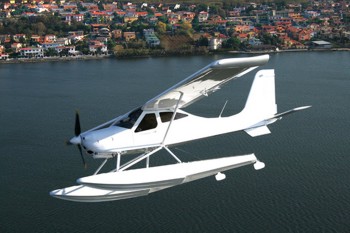
Floats always add sex appeal to land planes, don't they? photo courtesy Tecnam

Jim Lee finishing the NASA speed run. photo courtesy NASA.

Pretty Phoenix. photo courtesy Jim Lee

A couple fun things before I lose the day entirely.Just got word from Tecnam today, via Plane & Pilot publisher Mike McMann, that the Italian aircraft producer has adapted one of my favorite LSA, the P92 Echo and Eaglet (trainer version), for water operations. *** Dubbed the P92 Sea-Sky Hydroplane, this waterbird should prove to be yet another fun entry into the SLSA sweepstakes. *** My impression of the Eaglet remains: a lively, forgiving, fun-to-fly all metal trainer that I expect will appeal even more with web feet, for those of aquatic inclinations. *** Some details: The Hydroplane is the 6th generation model of the successful P92. *** Takeoff run is spec’d at under 200 meters, along with “an impressive climb rate” from its 100-hp Rotax engine. And I wonder how the Eaglet’s landing performance, for example (26 knots, full flaps, no power) will translate to the water and extra weight.
New Tecnam Float Plane; Impossible Turn 2
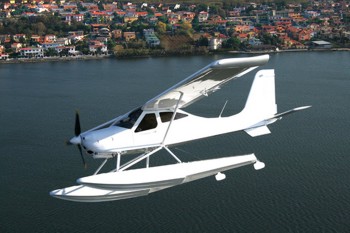
Floats always add sex appeal to land planes, don't they? photo courtesy Tecnam

Jim Lee finishing the NASA speed run. photo courtesy NASA.

Pretty Phoenix. photo courtesy Jim Lee

A couple fun things before I lose the day entirely.Just got word from Tecnam today, via our publisher Mike McMann, that the Italian aircraft producer has adapted one of my favorite LSA, the P92 Echo and Eaglet (trainer version), for water operations. *** Dubbed the P92 Sea-Sky Hydroplane, this waterbird should prove to be yet another fun entry into the SLSA sweepstakes. *** My impression of the Eaglet remains: a lively, forgiving, fun-to-fly all metal trainer that I expect will appeal even more with web feet, for those of aquatic inclinations. *** Some details: *** The Hydroplane is the 6th generation model of the successful P92. *** Takeoff run is spec’d at under 200 meters, along with “an impressive climb rate” from its 100 hp Rotax engine. And I wonder how the Eaglet’s landing performance, for example (26 kts., full flaps, no power) will translate to the water and extra weight.
Demystifying The Killer Turn
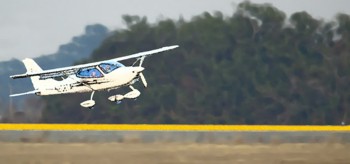

Everyone gets the big scare speech early on in their flight training: “If you lose power on takeoff,” say our trusty CFIs, with the requisite sobering tone of voice, “DO NOT try to return to the airport if you are below X feet above ground… always find an emergency landing area somewhere ahead.” *** Everyone has their favorite altitude number for “X”, which is a factor of many variables, including aircraft engine off glide ratio and density altitude. Usually it’s a comfortably conservative number, say 1000 feet minimum AGL. *** There’s a good reason for that cautionary buffer zone of course: many pilots — and passengers — have died trying to make the killer turn back to the airport from too low an altitude. *** In an attempt to demystify the infamous “Impossible turn”, AOPA online managing editor Alyssa J. Miller goes about the worthy business of investigating firsthand just how high one should be above launch airport altitude to feel safe about turning back for that oasis of engine-out safety: the runway.
FAA Amends Sport Pilot Examiner Medical Rule
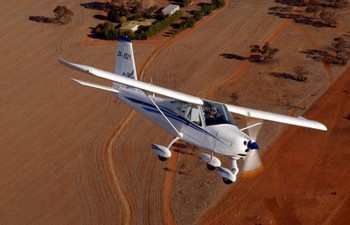
photo courtesy Aviation Advertiser

Getting into the New Year garage cleanup spirit, the FAA has amended its Part 61 flight training rule, finalized in 2009, with some needed clarifications and corrections.The stated purpose is to “revise the training, qualification, certification, and operating requirements for pilots, flight instructors, ground instructors, and pilot schools.” *** The primary change as it relates to our corner of the aviation universe: Flight examiners giving the checkride for the Sport Pilot ticket do not need a medical certificate as long as they have a U.S. driver’s license: i.e. the same self-certification of competence to fly requirement that governs the Sport Pilot license qualification. ***
LSA News Bits as 2011 Draws to a Close
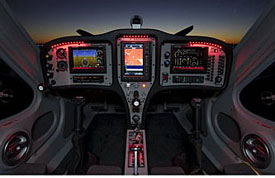
photo courtesy Remos Aircraft

photo courtesy CubCrafters

photo courtesy Rans Aircraft

photo courtesy Remos Aircraft

In 36 hours or so, Chief Pilot S. Claus will be on final for a few billion chimneys worldwide. Here’s what’s popping up in one of my last looks at LSA news webwide for 2011. Meanwhile, my best wishes for a Merry Flying Christmas and new flight horizons for all in 2012! *** Cubcrafters flexes its market success muscle with a new manufacturing facility and the hiring — yes, hiring! — of new personnel to build its popular LSA Piper Cub clones. *** A newly leased 15,000-square-foot building near the Yakima, Washington airport boosts existing capacity by almost 40% and is already in operation. Congrats to CubCrafters and we wish you continued success. *** Included are a new welding shop and CNC (Computer Numerically Controlled) machine shop. *** The new space will make room in the main plant for an R&D facility and an updated, more centralized parts department. *** Owner Jim Richmond says, “Our planes are selling well, and if we get even a little help from the economy, we will need to increase our production rate.” *** Check out those job openings.
Knocking Around The InfoVerse
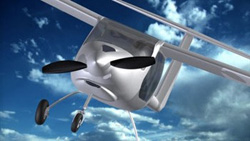
image courtesy Pipistrel

photo courtesy Dan Johnson

photo courtesy Dynon Avionics

photo courtesy Sebring Expo

Flight Design CTLE photo courtesy Flight Design

|||| News travels fast these days: Just ask Herman Cain. New tech net scraper Gizmag just ran a blurb on the Pipistrel Alpha that I covered earlier. Gizmag’s focus is on Alpha’s low cost, which as they note is less than €60,000 (currently about $80,000). *** Now consider this: if the euro continues to go through its troubles and drops further against the dollar, imagine a quality SLSA, like the Alpha promises to be (it’s based on a years-proven design — the Vinus/Sinus — with hundreds now delivered), priced at, perhaps, $70,000. For all of us who’ve decried the high costs of LSA, might this be the price point/airplane that would help break the LSA sales logjam? |||| Dynon plans Hands-On SkyView Training at Sebring. Who among us hasn’t sat for the first time in a new LSA and felt brain overload when confronted with an unfamiliar EFIS display?
Oldest Living LSA Pilot?
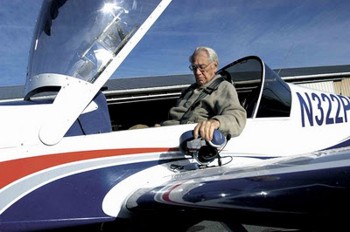
J. Guy Reynolds about to do his thing. photo courtesy The Journal

Evektor SportStar. photo courtesywww.lightsportaircraft.ca

Here’s a story to give us all some cheer as we slide into final on the Holiday Season. *** An article in Martinsburg, West Virginia’s The Journal newspaper chronicles the exploits of one T. Guy Reynolds Jr. , a local pilot who just celebrated his birthday by spreading his wings in his Evektor SportStar. *** “No big deal”, you say? Ah, but this gentleman is one year shy of being a centenarian …that’s right, he just turned 99 years old! That makes him, says the article penned by John McVey, likely the oldest pilot in the state. *** And we have to ask …maybe the nation? *** “I wanted to fly on my 99th birthday,” he said. “I enjoy it, and my airplane is very nice to fly.” *** The SportStar model was the first to win ASTM approval back in 2005 as a legal SLSA and continues in its latest iteration as the Harmony…my flight report is due out in the next issue of the magazine.
Cessna Feels The Pinch …and Pinches Back
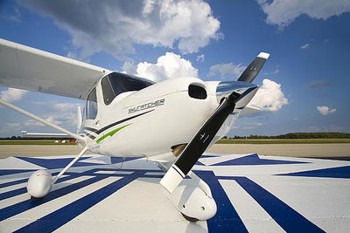
The Sky's no limit...in greenbacks.


Pipistrel's new trainer LSA, the Alpha, will make a debut in 2012 at about $80,000. artwork courtesy Pipistrel

In a recent piece on AvWeb, Paul Bertorelli takes a good look at Cessna’s decision to bump the price of the Skycatcher by a cool $35K — yes, that’s 35 thousand. Okay, it’s not every day we see a 31+% price hike in a retail price of anything, especially in this economy. *** Yet Cessna’s move should come as no surprise to anyone who knows, as Bertorelli points out, that the price of aircraft has grown faster than the rate of inflation for decades. Thirty years or so ago, a new Cessna Skyhawk could be had for around $30,000. Today it’s 10 times that number, or more than $300,000, whereas inflation applied to that original $30K number would put the figure just north of $100,000…about three times higher. *** Meanwhile, the aviation giant has up until now done its best to keep the price close to it’s original near-$100,000 level.
Unintentional Holiday part Deux
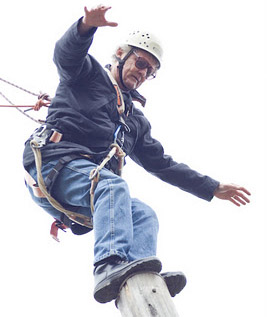
Yours Truly scaring the crap out of hisself

SALSA's Rand Vollmer and the components for his soon to be built Sinus motorglider...

...which will look like this!

Taurus self-launching motorglider; also comes electric powered!

(Note to my readers: the first part of this tome is just below) *** So here I was in Slovenia, unable to fly and three more days before I could return to my wife in Hamburg, unless I wanted to pay another $200 to change the flight. Modern air travel, what a concept. *** Undaunted and determined to enjoy my first visit to this lovely country after two days in bed with a virus (the physical kind, not the airplane), I crawled back into the light and joined up with Rand for a thoroughly enjoyable factory tour, courtesy of Ivo’s daughter Taya (she’s also a partner in the firm), who speaks very good English indeed and gave us a very informative and enjoyable peek at how the company does it’s day-to-day.And what a factory! High tech geothermal heat, solar power (enough to run the entire factory year round, and sell excess back to the grid) and open, sunny, airy spaces all make for a wonderful working environment.
Green Flight Challenge A Teachable Moment
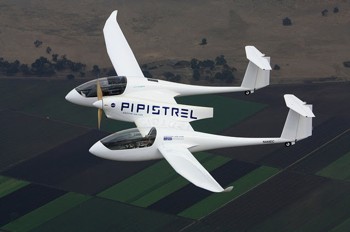
The winnah! Pipistrel's Taurus Electro G4. photo courtesy Pipistrel

Up to the Challenge: eGenius takes flight. photo courtesy NASA

Posting from Istanbul, Turkey where I’m on vacation with my family, but just couldn’t wait another day to talk a bit about what most everybody in aviation’s been talking about these last several days: the CAFE Green Flight Challenge (GFC). *** History was made when the Pipistrel Taurus Electro G4 twin-fuselage electric-powered aircraft carried four adults, around 1000 lbs. of batteries, one electric motor with a bit prop, and a lot of engineering and piloting savvy to victory in the GFC. They earned themselves $1.35 million in the process. Huge and well-deserved congratulations to Pipistrel!But for my money, the deeper story is not just that they flew off with the biggest aviation dollar prize ever, or even that they accomplished the task of flying 200 miles on one battery charge while also averaging more than 100 mph for the entire flight, or that they did it while “burning” the equivalent of 1 gallon of gas per passenger, or four gallons total…but…that they accomplished all that yet consumed the equivalent of around 1/2 gallon of gas per passenger!
Green Flight Challenge Down to Final Three!
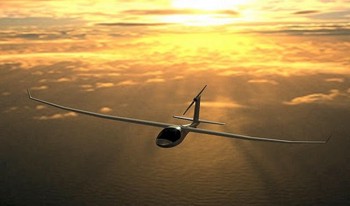
The eGenius all-electric CAFE Green Flight Challenge competitor. photo courtesy Eric Raymond

eGenius, designed by Univ. of Stuttgart engineeers. photo courtesy Airbus

Updates 10/4/11 and 10/5/11 — Congratulations to Pipistrel for their unprecedented third win at a NASA Challenge. Picking up a cool $1.35 million, the company won with their unorthodox dual Taurus G2 fuselages joined by a larger, centrally-mounted electric engine. The custom-configured, four-seat aircraft achieved an amazing 403 passenger miles per gallon of fuel (or its equivalent). After this string of wins, Pipistrel has firmly placed itself in the lead position among highly efficient light aircraft and those powered with electric motors. *** NASA claims the prize purse was the biggest ever awarded for an aviation competition. In second-place a much smaller but still hefty check for $120,000 went to the German eGenius team, NASA announced. *** Read more from our friends at AvWeb and at Flying online. In addition, Aero-News offers a video with more on the potential of electric power (scroll to or search for “The Green Flight Challenge”).




